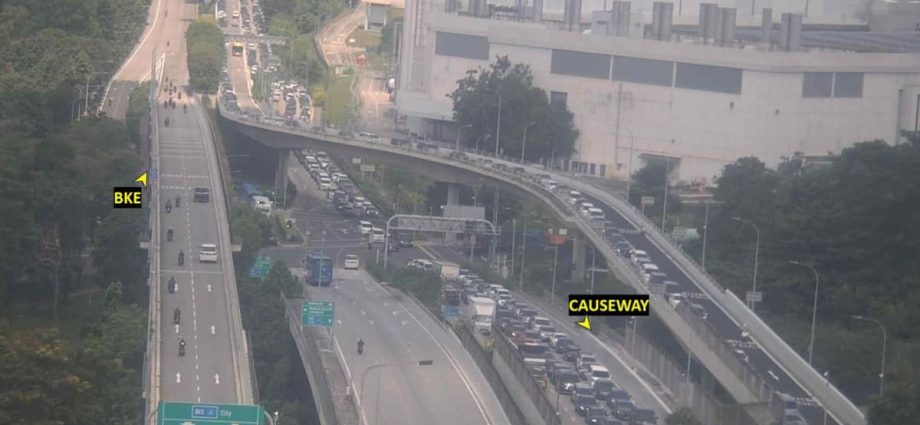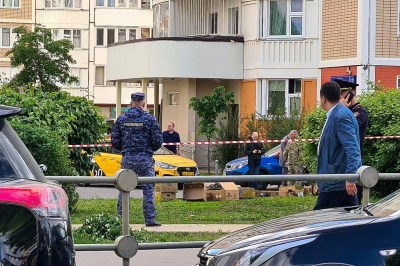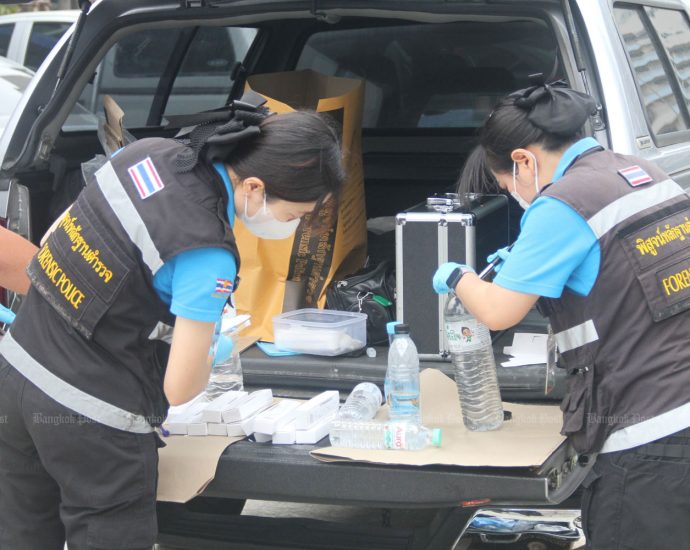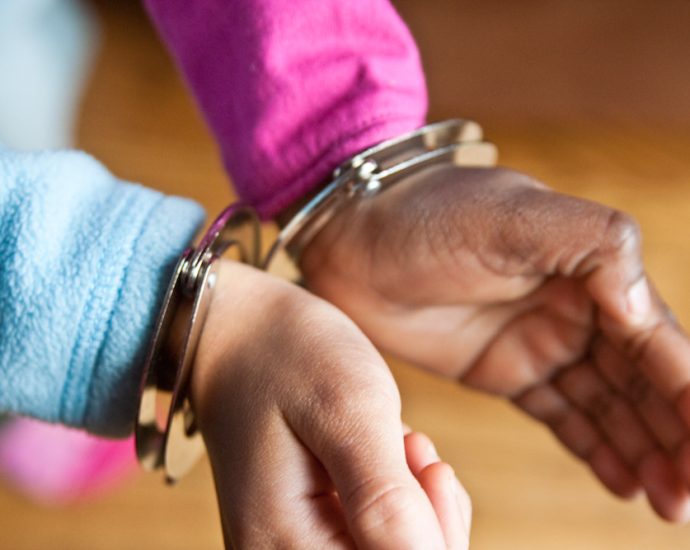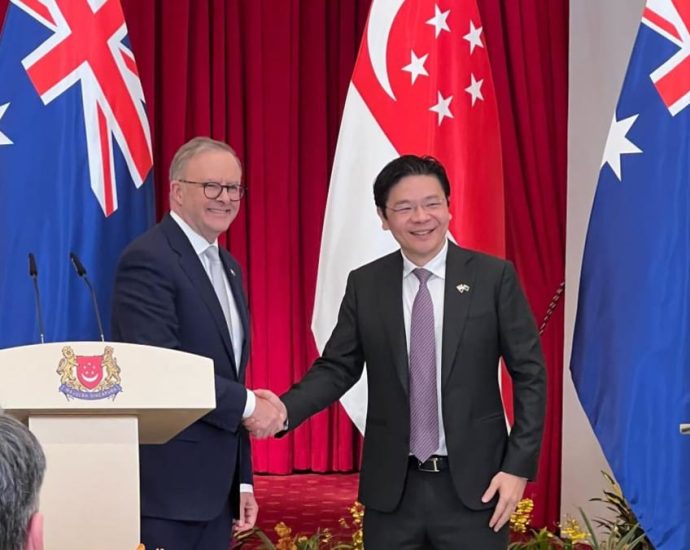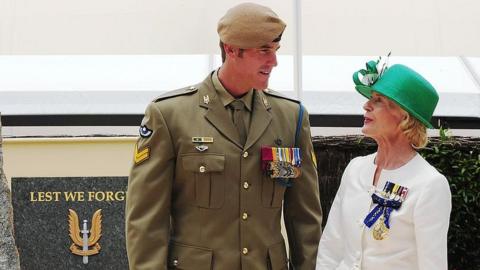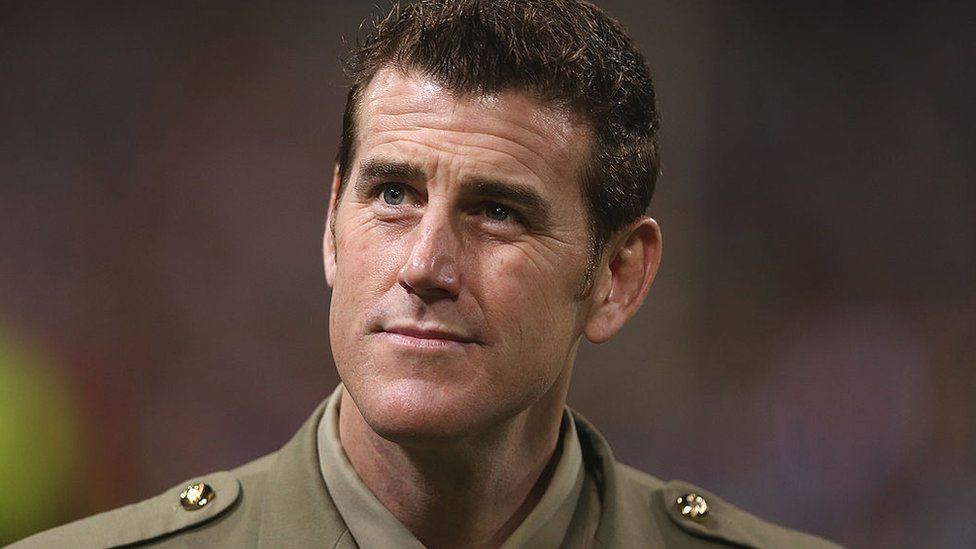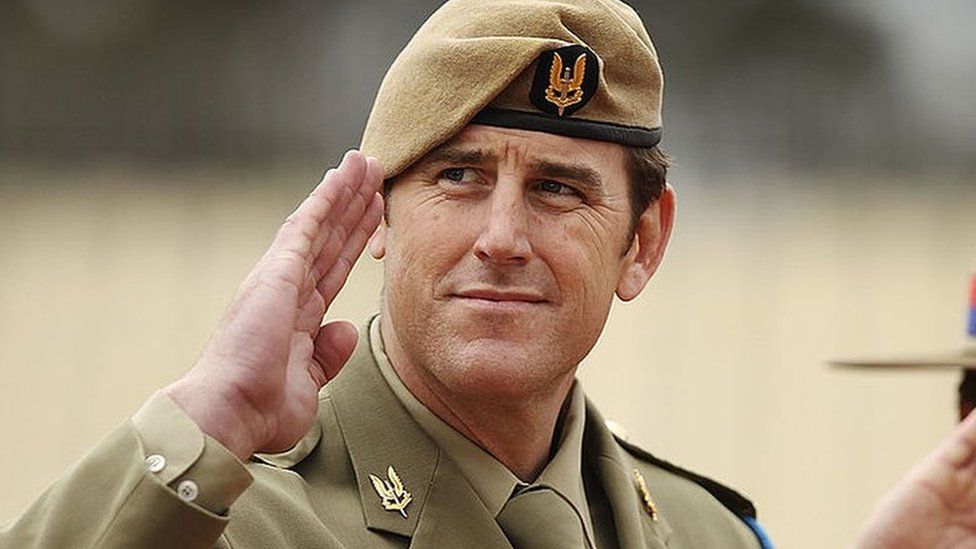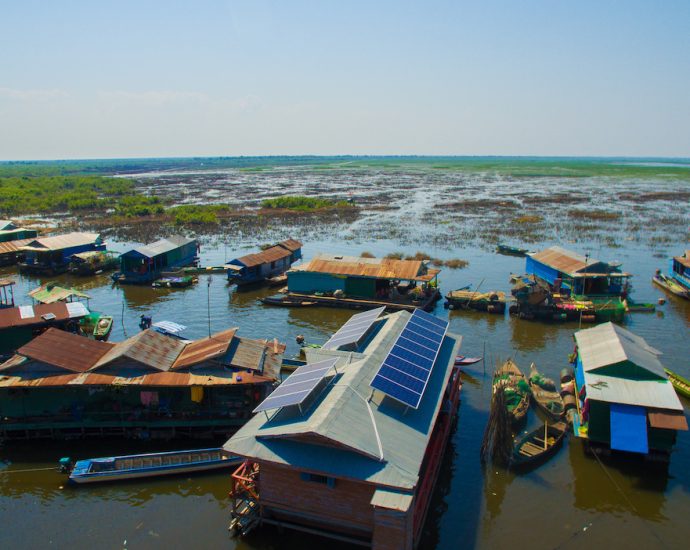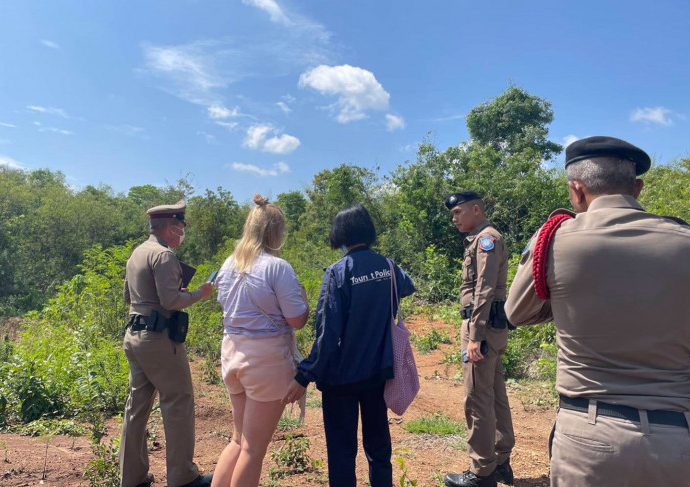250,000 travellers departed Singapore via Woodlands, Tuas Checkpoints on Jun 1
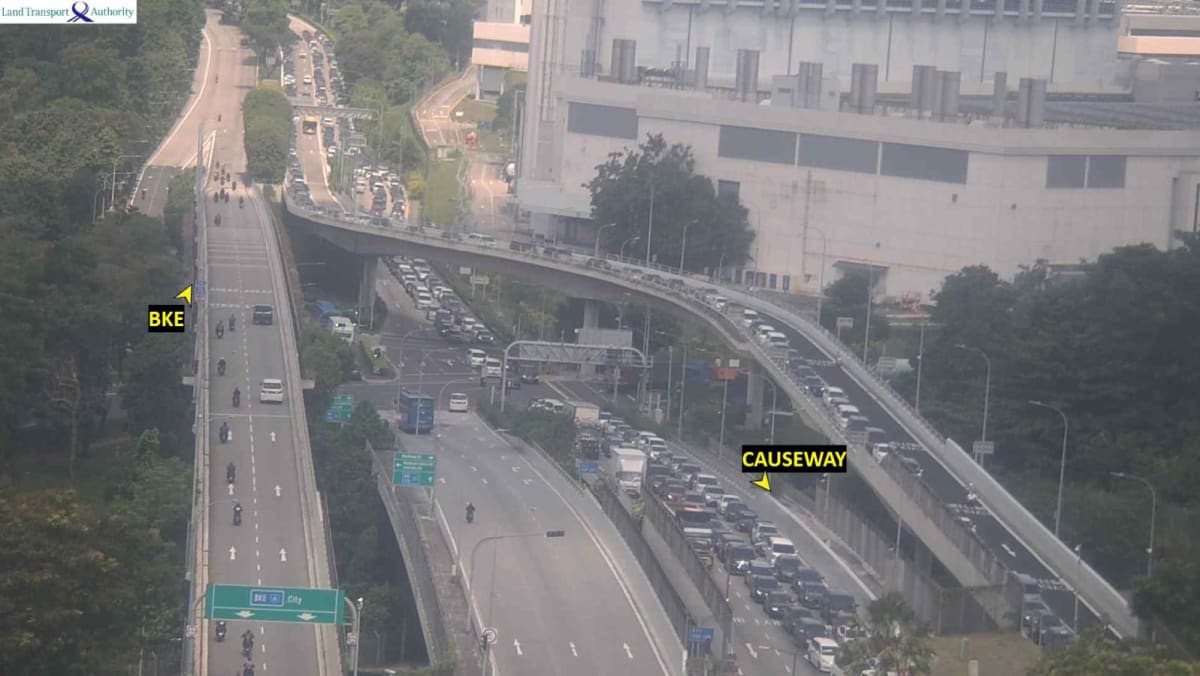
TRAFFIC TO REMAIN HEAVY
Traffic is expected to remain very heavy at both land checkpoints with continuous tailbacks from Malaysia’s checkpoints for departing motorists, said ICA.
Those who wish to depart to Malaysia or enter Singapore via the land checkpoints by car or bus are advised to factor in additional waiting time for immigration clearance.
ICA also requested patience from travellers and that they should observe traffic rules, maintain lane discipline and cooperate with officers on-site when using the land checkpoints.
In a Facebook post on Friday afternoon, ICA said it had enforced the “no right turn” rule for drivers seeking to enter Woodlands Checkpoint from Woodlands Centre Road.
Drivers are to find alternative routes to Woodlands Checkpoint like the Bukit Timah Expressway or Woodlands Road, and are reminded to maintain lane discipline and cooperate with officers performing traffic control duties on site, it added.
Close to 1.4 million travellers crossed the land checkpoints over the Good Friday long weekend in March, with an average of about 350,000 crossings a day.
Drone strikes up the ante of Ukraine war
A wave of approximately 30 drones appeared in skies around the Russian capital, Moscow, on May 30. Though widely sensationalized as a major attack against the heart of the Russian government, they caused only minor damage, mostly to high-rise buildings.
These drones were not intended to cause major destruction. Rather, they were meant to send a message that Ukraine – which has not claimed responsibility for the strikes – has both the capacity and will to strike back at the capital of its enemy invader.
Although different in scale, this is not the first such strike against Moscow. In early May, Russia alleged that Ukraine had targeted President Putin with a drone strike, which Ukraine’s president, Volodymyr Zelensky, promptly denied.
And Ukraine is thought to have been behind a series of drone strikes against airbases in Russia’s Kursk, Saratov and Ryazan regions, up to 300 miles inside Russian territory.
More recently, the Russian defense ministry claimed that a Ukrainian drone attack on one of its spy ships in the Black Sea, the Ivan Khurs, had failed. There have also been drone strikes against Russian oil pipelines and refineries including near the Black Sea port of Novorossiysk, a crucial oil export hub for Russia.
Drone strikes are not the only way in which the war has come home to Russia. The Belgorod region, to the north of the Ukrainian city of Kharkiv, has seen a spectacular ground assault raid by the so-called Russian Volunteer Corps and Free Russia Legion (two Ukraine-based far-right Russian militia groups), which took the Russian military two days to repel.
Because of its strategic location as a training and staging ground, Belgorod has repeatedly come under attack. In October 2022, two gunmen killed 11 soldiers at a training ground, wounding a further 15.
The region has also been repeatedly struck by Ukrainian artillery, missiles and drones since the beginning of Russia’s invasion in February 2022. These strikes have become more frequent and intense in recent weeks.
Intensifying air war
The bigger picture that emerges from all this has two important dimensions. First, it suggests that at the moment, there is a lull in the ground war and an intensification of the air war. This comes after Russia’s Wagner paramilitary group finally captured the embattled city of Bakhmut on May 20.
The costs of the intensifying air war are particularly borne by Ukraine, which has endured daily waves of drone and missile attacks since then, including on its capital Kiev.
None of this has been a gamechanger for either side. If anything, it has demonstrated Russian vulnerabilities that expose the Kremlin’s version of the “special military operation” for what it is – a full-on war in which even the Russian capital is not safe from air strikes, let alone areas closer to the border with Ukraine.
But it has also made it easier for Kiev to lobby Western allies successfully for more military support, demonstrating the need for, and usefulness of, both air defense systems and advanced attack drones and missiles – such as the UK’s Storm Shadow missiles which, according to Ukraine’s Defense Minister Oleksii Reznikov, “hit 100% of their targets.”
The second dimension is that while the air war and protracted battle over Bakhmut have captured most media attention, Russia has dug in deep in the Ukrainian territories that it captured and now occupies. Defenses against an expected Ukrainian offensive have been massively fortified along the around 1,000 kilometers of frontline and along the beaches of Crimea.
But Russia is also digging in in other ways. On April 27, Putin signed a decree that forces residents in the occupied territories either to accept Russian citizenship or become stateless.
And at the end of May, the Russian president approved amendments to existing legislation of martial law, including forcible population transfers and holding of elections in territories where martial law has been declared.

This suggests that Russia is unlikely to attempt to capture additional Ukrainian territories – at least, not for now.
Rather, the Kremlin seeks to consolidate its hold on what it already has annexed. This is most likely an attempt to withstand Ukrainian pressure during Kiev’s anticipated offensive until it runs out of steam.
A failure by Ukraine to regain significant ground on the battlefield, in the Kremlin’s logic, might increase the chances of a ceasefire that would further strengthen its territorial control.
Such an outcome might also fracture the West’s united front of support for Ukraine, especially ahead of another winter war and as the US is heading into a fiercely contested presidential election in 2024.
Ukraine’s message to Russia
Ukraine’s best chance of avoiding such an outcome is to make significant gains in its counteroffensive campaign. The drone strikes on Moscow can be seen as preparations for that.
They will provide a boost to morale for the Ukrainian army and people, ahead of what is likely to be a costly and painful military push. They demonstrate that Ukraine is ready to take the fight to the enemy, and that no one is invulnerable to their retribution.
In attacking deep inside Russia, these strikes will also force Russia to keep air defenses close to symbolically and strategically important assets, rather than deploying them closer to the frontline with Ukraine.
The attacks also send a message to the Russian people that the “special military operation” is making them less, not more, secure. Putin has so far presented the war as something that has had little impact on Russian daily lives.
These drone attacks and the coming counteroffensive, with all the destruction and casualties it is sure to bring, will puncture that lie.
David Hastings Dunn is Professor of International Politics in the Department of Political Science and International Studies, University of Birmingham and Stefan Wolff is Professor of International Security, University of Birmingham
This article is republished from The Conversation under a Creative Commons license. Read the original article.
Aem Cyanide case nearly ready for prosecutors
Surachate confident of evidence against accused serial killer

Police are preparing to wrap up their investigation into suspected serial killer Sararat “Aem Cyanide” Rangsiwuthaporn and submit their report to prosecutors next week.
Investigators had found evidence to implicate Ms Sararat in the cyanide poisonings, deputy national police chief Pol Gen Surachate Hakparn said on Friday. They had examined purchase records for more than 700 bottles of cyanide and found that “Aem Cyanide” had purchased one bottle.
A total of 11 deaths took place not long after the deadly chemical was in her hands, Pol Gen Surachate said at the Royal Thai Police Office.
“Now, Aem’s story is completely over because we found that she was the one who ordered the cyanide. Everything is connected,” he said.
Ms Sararat, 36, was arrested on April 25 at the Chaeng Watthana Government Complex in Bangkok. She was four months pregnant at the time. Her arrest followed a complaint filed by the mother and sister of Siriporn “Koy” Khanwong, 32, of Kanchanaburi.
Siriporn collapsed and died beside the Mae Klong River in Ban Pong district of Ratchaburi, where she had gone with Ms Sararat to release fish for merit-making on April 14. Cyanide was found in her body.
The list of her alleged victims has continued to grow. All told, she faces 14 charges of murder and one charge of attempted murder.
Pol Gen Surachate said he believed a serious gambling addiction could have been a factor that pushed Ms Sararat to murder 14 people using cyanide.
An analysis of the 78 million baht that had passed through bank accounts held by the accused suggested she had a bad gambling habit, the deputy chief said on May 19.
On Saturday, the investigation team will start collating all the details in its report. It will then coordinate with the Office of the Attorney-General (OAG) to submit the report into 15 cases against Ms Sararat next week, said Pol Gen Surachate.
After that, investigators will turn their attention to cases against factories and those who purchased cyanide from them. They are also looking into whether officials at the Department of Industrial Works, which regulates the factories, were complicit.
Other charges of violating the Consumer Protection Act are also possible, he added.
“I assure that the investigation report will be concluded next week,” he said. “The investigative report is now almost 100% complete. I will coordinate with the director-general of the OAG to hold a joint meeting and submit the report.”
According to Pol Gen Surachate, Sararat purchased cyanide online two years ago, based on evidence of money transfers for the purchase. Both the buyer and the company that sold the chemical would face charges.
He brushed off a threat by the suspect’s lawyer to file a defamation complaint against him, saying he and his team handled their task in a straightforward manner and never slandered anyone.
The lawyer, Thannicha Aeksuwannawat, made the threat last week after reporting to police to answer charges of assisting her client in destroying or concealing evidence of a crime.
She denied all the charges and said she would file defamation suits against certain police officers and media outlets.
Singapore recalls EGO Honey Dates due to excessive levels of sulphur dioxide
SINGAPORE: The Singapore Food Agency (SFA) has ordered a recall of EGO Honey Dates after detecting sulphur dioxide beyond permissible levels. The allergen, which was not declared on the food packaging, was found at levels “exceeding the maximum limit” stated in Singapore’s Food Regulations, SFA said in a media releaseContinue Reading
The advocate helping children speak for themselves
Children make up a third of the world’s population. One might wonder what would happen if they had self-representation in global politics.
“A society that welcomes the voices of children will certainly be a bit noisier. As if adults weren’t noisy enough,” joked child rights advocate Amihan V. Abueva. “But maybe with some louder noise from the younger ones, we could find more sense and better solutions.”
From the Philippines, Abueva has been a pioneer in her field for more than three decades. This week marked International Children’s Rights Day on 1 June, which the Southeast Asia Globe commemorated by walking through her pivotal work across the region and world in an extensive interview.
A key member and former president of the Bangkok-based child protection network ECPAT International, Abueva played a major advocacy role for stopping child prostitution in the global sex tourism of Southeast Asia.
Beyond that, Abueva has long been a vocal proponent of the right of children to participate in society, especially in policy-making about child welfare. She previously served as the Philippines’ government representative to the ASEAN Commission for the Promotion and Protection of the Rights of Women and Children (ACWC) and has worked to encourage input from youths and children.
Abueva was born in the Philippines and raised during the authoritarian regime of President Ferdinand Marcos Sr. In those years, she overcame several obstacles to become a rights defender, but the real turning point in her work as a children’s advocate wasn’t until after the end of the Marcos dictatorship in 1986.
Soon after the restoration of democracy, she gave birth to a child.
“Then it was when I became a breastfeeding advocate and got more serious about children’s rights,” Abueva said. “I have never left.”
That was 1988. The next year, the UN adopted the first children’s rights international treaty, the Convention on the Rights of the Child (UNCRC). Abueva, who started her activism in the Marcos years, and her team successfully lobbied the Philippine Senate until it signed and ratified the treaty in 1990.
The UNCRC is now the most widely ratified human rights treaty in history, adopted by 196 nations, including all Southeast Asia countries.
Although that was a big milestone for the region, Abueva felt it wasn’t enough.
Through the years, while overseeing research on prostitution and tourism, she felt “it was really important to talk to the children themselves about it”.
In 1996, she embarked on a campaign to involve children in the first World Congress Against Commercial Sexual Exploitation of Children in Stockholm. The event included representation from 122 governments and civil society organisations from around the world.
“I had a real uphill battle,” she said. “I insisted that children should be participating at the same level as adults, and I won.”
The planning committee accepted her plea and 16 children from the Philippines, Sweden, Brazil and Ghana participated in the congress.
That was just the beginning. From 2000 to 2008, hundreds of children from more than 20 countries were involved in international meetings. As children’s participation grew quickly, ECPAT worked along with other international organisations to facilitate the process and train adult participants to safely and effectively interact with the youths.
“Many people work for children, but they don’t know how to work with children,” she said.
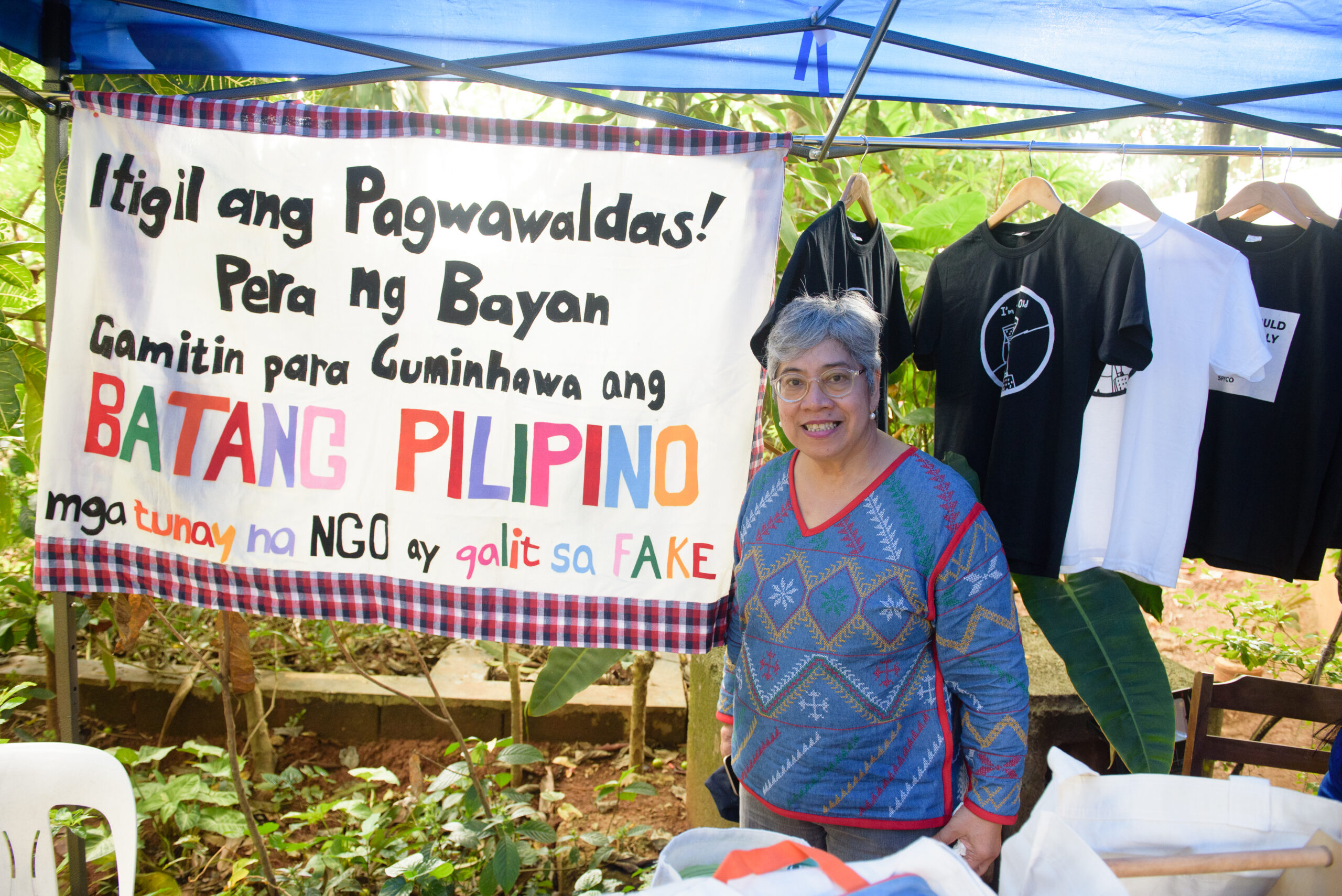
Abueva wants to see even more child participation across all levels of governance, from domestic to international.
“When you help children to grow and develop critical thinking, they can become leaders for themselves,” she said. “It is our responsibility to accompany them. Especially in our society, which is not kind towards those who think critically.”
What does child participation mean in the context of Southeast Asia?
A concept we are seeing emerging now is children as human rights defenders. But, of course, it’s difficult in a region where even adult human rights defenders are at risk.
By using the term “human rights defenders”, children could find protection in already-existing international legislative standards. But the problem is how the state allows those rights. We have to help children to value peace and solidarity and so to help each other rather than become military-led.
Recognition of the children’s right to participate in Southeast Asia has been progressing at different levels. Thailand, Indonesia, Cambodia, Philippines, are more involved in child participation across the region, while others, such as Laos and Vietnam, are still trying to catch up. In Myanmar, we also have a big problem now. The military junta really endangers lots of children. We are still working with some groups there, but they have to be really careful. We are still trying to find safe ways for them to participate, for instance, through consultations with the UN.
Civil society organisations, government agencies and inter-governmental bodies have strengthened collaborative work to create safe spaces for children to express their views on matters affecting their lives. But aside from the various efforts of creating safe spaces for children, child participation is not just children receiving kits or food during an activity, it is not just children watching magic shows, or having activities to commemorate children’s month.
Meaningful child participation brings in children even at the planning stage, where children can raise what they think is the best way for them to celebrate the children’s month, what programs, projects or activities are appropriate or are needed by them and their peers, and how the activities should be implemented that will ensure child-friendly approaches and tools. Another important aspect of meaningful child participation is getting the children’s feedback on the activities and how they can be further improved in the future.
Allowing children to speak and make decisions, even as simple as letting them decide the colour of shirt to wear, helps them develop important life skills like problem-solving, critical thinking, and communicating.
What programs and activities are available for children to participate in key decisions at a community or national level?
At the national level, civil society groups are advocating for more meaningful child participation in existing or current mechanisms.
For example, in the Philippines, the local government units are mandated to create a Local Council for the Protection of Children at the village, city or municipality and province levels. Children representatives are among the members of the council. Consultations with children are being conducted at the village level. The team is also in charge of promoting and ensuring a safe environment for children and overseeing the government’s action on the topic.
Across the region, efforts to organise children and youth groups are also multiplying because we have to remember that children are not just passive recipients of services, victims, or survivors, but they are also active agents of change.
In issues like climate change, children are already taking action in simple ways that are also relevant in their own community. In the UNCRC monitoring and reporting, children are actively participating in preparing the reports submitted to the Committee on the Rights of the Child.
At the regional level, there is the ASEAN Children’s Forum (ACF), which is conducted every two years. During this regional meeting, children talk about issues that affect their lives and their peers. We also conduct a regional childrens’ meeting annually. We gather children from the communities where our member organisations work. In addition, we conduct consultations with children for our strategic plan.
In 2019, we organised the Asian Children’s Summit for the first time. It was a way to try to bridge the whole of Asia. So we had children from East Asia, Southeast Asia and South Asia. The kids discussed four main themes, namely the right to help the environment, digital safety, children and the in the context of migration and violence against children and we asked them to develop what they wanted to say about this.
That event especially demonstrated that children have so many ideas and that we need everybody to be working together.
We value children’s voices in our work and we learn a lot from them and because of this, we are able to do our work better.
What are some of the main challenges in this field?
First, the participation rights of children need to be fully understood by all stakeholders. It is not just simply listening to children when they talk. Article 12 of the UNCRC talks about “giving due weight in accordance with the age and maturity of children”. It is active listening for adults and taking action based on the views of children. At the same time, adults have the responsibility to explain to children why some of their views could not be considered.
Meaningful child participation can be consultative, collaborative or child-led. These three approaches are equally important.
Another problematic thing in Asia is that there is the process behind the [ASEAN Children’s Forum], which is organised by the ministers for social welfare and development and regional working groups. The ones who really get the work done here are senior officials in the end, which is not really the point of a children’s forum, is it?
We [children’s rights practitioners] don’t know who actually listens to what the children said and what they do with the children’s opinions afterwards. There’s been an attempt to revise the terms of reference, but I’m not sure whether that’s already been changed or not.
Another major issue now is that children are the first ones to lose their voice when civic space shrinks and states impose stronger restrictions. That is what’s happening in Myanmar. But in the Philippines, things are also not going too well for children.
During the Covid-19 pandemic, two teenage girls broke the curfew rules and two policemen caught them and took them to the beach. They sexually molested one and raped the other. Following the event, one of the girls went to report the case to the police in a neighbouring town but in addition to being denied police protection, on the way home she was ambushed and shot dead.
Our work is to explain to the kids that when you are abused go to the police and report the violence. But cases like this really break everybody’s trust. If even the authorities don’t respect children, we are in big trouble.
Our role as child rights defenders is to ensure that the children’s voices are heard as loudly as possible.
What are your hopes for the future of children’s rights in Southeast Asia?
One day, a girl from Pakistan and her Indian friend came to me and said: “Grandma Ami, when you talk about our right to a healthy environment, don’t think only in terms of physical health, you have to also talk about mental health.”
And I was really taken aback because it was 2019. At that time, there wasn’t that much being said about the mental health of children. This was pre-pandemic. I really thought they had a point. Mental health was and is a big problem and I realised that thanks to two children speaking up to me.
This is exactly what I hope for the future; that adults value children’s opinions. When we embrace their participation, we need to value them for what they are now and for what they will be in the future.
Children’s rights are everybody’s business.
Singapore and Australia to launch A$20 million programme to help SMEs co-develop innovative green products

SINGAPORE: Singapore and Australia will launch a new A$20 million (US$13.2 million) programme to support small- and medium-size enterprises (SMEs) from both countries to jointly develop innovative green products.
Under the Go-Green Co-Innovation Programme, Australia’s Department of Foreign Affairs and Trade, as well as Enterprise Singapore will set aside the sum to support SMEs from both countries over the next four years, said the Ministry of Foreign Affairs (MFA) in a factsheet.
The programme falls under the Singapore-Australia Green Economy Agreement, which was signed by both countries in October 2022.
Singapore and Australia will also work towards establishing a green and digital shipping corridor between their ports by the end of 2025, MFA said.
The two countries are finalising the guiding principles and work plan to guide collaboration under a food pact, which aims to increase the trade of food products, promote Singapore as a transhipment hub for Australian food products, and cooperate on global food security issues.
“When you think about the future objectives that both Singapore and Australia would like to see for our economies and societies, clearly, there are many shared objectives,” said Acting Prime Minister Lawrence Wong on Friday (Jun 2), speaking at a joint press conference with Australian Prime Minister Anthony Albanese.
“We both want a greener and cleaner future, and we will get to net zero. We both want more resilient supply chains, particularly in critical areas like food and energy,” Mr Wong continued, responding to a question about what the private sector can take away from the partnership.
This “very clear alignment” of objectives will provide many opportunities for the private sector to collaborate, he added. “Because we cannot achieve all that we want through government collaboration.”
The private sector in the region is “looking for certainty” and are up for investments, said Mr Albanese.
“They know the enormous economic opportunity that areas like green hydrogen, the transition to green shipping, to cleaner aviation, the use of biofuels, the transition that is occurring in the economies of the world, they understand that it’s an opportunity,” he added.
“But they’re looking for governments to facilitate the investments that they’re up for making.”
Mr Wong received Mr Albanese at the Istana on Friday as Acting Prime Minister for the 8th Singapore-Australia Leaders’ Meeting, after Prime Minister Lee Hsien Loong tested positive for COVID-19 again on Thursday.
Mr Albanese is due to deliver the keynote address at the Shangri-La Dialogue on Friday evening.
Singapore to block Asia Sentinel website for not complying with POFMA correction direction
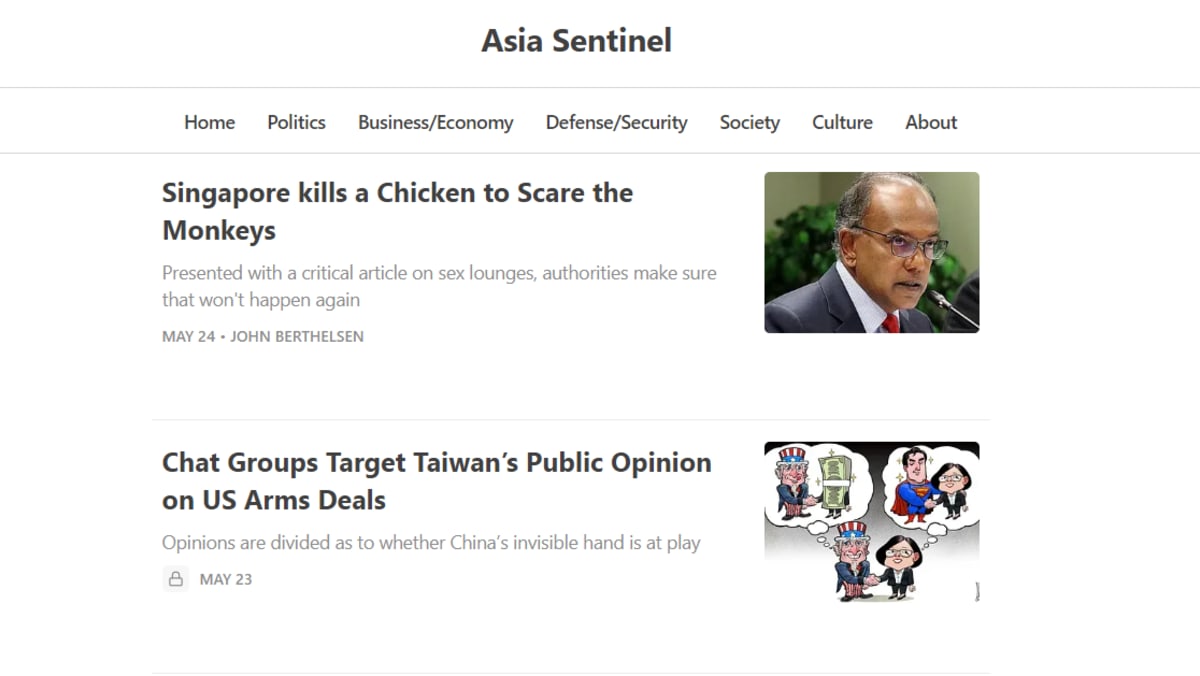
SINGAPORE: Internet access service providers in Singapore have been ordered to block the online publication Asia Sentinel after its non-compliance with a correction direction under the Protection from Online Falsehoods and Manipulation Act (POFMA), the Ministry of Communications and Information (MCI) said on Friday (Jun 2).
The California-registered publication was required to carry a correction notice alongside its May 24 article, which the Ministry of Home Affairs (MHA) said contained several falsehoods.
The Infocomm Media Development Authority has been directed to issue access blocking orders following Asia Sentinel’s non-compliance with the correction direction, MCI said in its press release on Friday.
MCI said that the correction direction issued to Asia Sentinel required the facts to be juxtaposed against the falsehoods, so that end-users in Singapore can read both versions and draw their own conclusions.
“While Asia Sentinel carried the correction notices, this was not done in compliance with the requirements of the correction direction for the respective correction notices to be situated at the top of the article and at the top of the main page of the website,” MCI added.
The access blocking orders require internet access service providers to disable access for end-users in Singapore to the online location where the falsehoods were communicated, it said.
The access blocking orders will be cancelled should Asia Sentinel subsequently comply with the “full requirements” of the correction direction.
MHA reiterated earlier on Friday that Asia Sentinel did not have to take down its May 24 article and the online publication was only required to post the correction notice in the manner that has been stipulated.
“If Asia Sentinel truly believes in free speech, it should be happy for its readers to read both the article and the correction notice, and make up their own minds which is true,” the ministry said.
POFMA’s primary tool to correct falsehoods is via a correction notice, “which must be placed in a specified proximity to the original post with a link to the government’s clarification”, according to MHA.
“This is akin to the right of reply practised by newspapers and magazines.”
Similar requirements have been placed on other recipients of correction directions and they have complied, MHA noted.
The ministry added that the government may have to take “further action” if Asia Sentinel does not comply with the correction direction.
A check by CNA at 3.30pm on Friday found that the correction notice on Asia Sentinel’s article was placed below an editor’s note which stated the online publication was “reserving the right to answer their (the Singapore government’s) demand at a future time” and that “we stand by our story”.
The correction notice was also not carried at the top of the main page of its website.
Ben Roberts-Smith case: Will Australia see a war crimes reckoning?
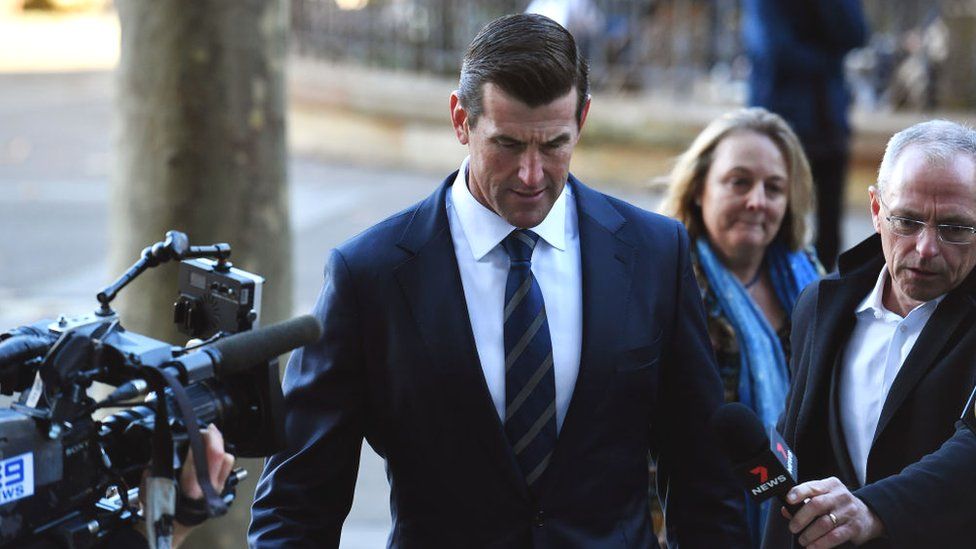 Getty Images
Getty ImagesOn Thursday, a judge calmly delivered an extraordinary ruling that will go down in Australian history.
The country’s most-decorated living soldier, Ben Roberts-Smith, had lost a defamation case against three newspapers who reported he had murdered unarmed prisoners and civilians while serving in Afghanistan.
The newspapers’ allegations that Mr Roberts-Smith was actually a war criminal, a liar and a bully were “substantially true”, the judge said in his civil case ruling.
The case is the first time an Australian court has assessed accusations of war crimes by Australian forces – ahead of what many predict will be a wider reckoning in the years to come.
‘Disastrous miscalculation’
Justice Anthony Besanko’s finding that four of six murder allegations – all denied by Mr Roberts-Smith – were in fact true shredded what was left of the Victoria Cross recipient’s reputation.
The former soldier’s decision to launch the defamation case has been called a “disastrous miscalculation” and an “expensive own goal”, and it could have far-reaching consequences for him.
With the civil case dismissed, attention has turned to whether Mr Roberts-Smith will now face criminal charges.
That’s unclear, legal experts say, because civil trials require a far lower burden of proof – the newspapers only had to show the allegations were more likely to be true than not.
Dr Jelena Gligorijevic, a senior lecturer in law at the Australian National University (ANU), says prosecutors will now have to decide whether there is sufficient evidence to prove the murders “beyond reasonable doubt”.
“That’s very, very different from proving on a balance of probabilities,” she tells the BBC.
“This defamation judgement is not at all conclusive on whether they will prosecute, and then whether they will be successful.”
There are already calls for Mr Roberts-Smith to be stripped of his military honours, and for glowing tributes dedicated to him in the Australian War Memorial (AWM) – which include portraits and his uniform and medals – to be removed.
On Friday, the AWM said it was now “considering carefully the additional content and context to be included” in displays which reference the former Special Air Service (SAS) corporal.
Others however have said that Mr Roberts-Smith is innocent until proven guilty in a criminal court, arguing no action should be taken until that point.
Mr Roberts-Smith’s lawyer has said they will comb the full defamation case judgement, leaving the door open for an appeal.
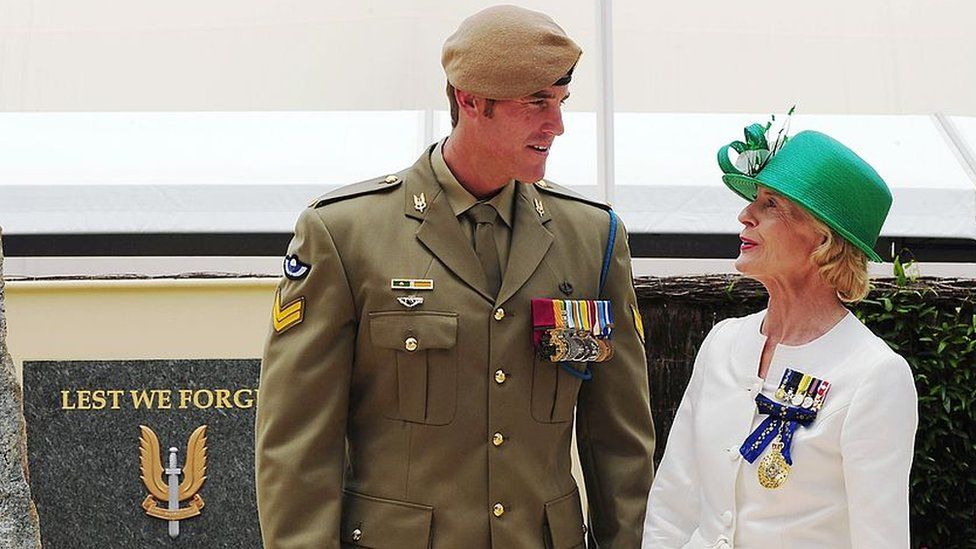
But the civil trial is already rumoured to have cost around A$25m (£13.2m; $16.3m). Traditionally, the losing party of any civil suit pays the legal costs of each side.
And Mr Roberts-Smith is newly unemployed. On Friday, his employer – Seven West Media – said it had accepted his offer to resign from a high-ranking role.
Dozens of investigations under way
The trial has also unearthed more tough questions for Australia’s army, which has long been considered by the public to have a distinguished legacy.
“People express great pride in the way in which Australia has fought – this is what’s known as the Anzac legend,” says Peter Stanley, the former principal historian at the AWM.
That legend is famously traced to a doomed offensive carried out by Australian troops at Gallipoli, Turkey, in World War One. It embodies a spirit of “egalitarianism and mutual support” that Australians still turn to in times of hardship and conflict, according to the AWM.
Each year, Anzac Day brings millions of Australians together at dawn ceremonies to remember those who served, and in particular, those who did not make it home.
Once feted as a paragon of the Anzac legend, Ben Roberts-Smith has now become the face of accusations Australian soldiers committed war crimes.
In 2020, a landmark investigation known as the Brereton Report found “credible evidence” that elite soldiers unlawfully killed 39 people in Afghanistan.
It kept most details a secret but said the allegations included what was “possibly the most disgraceful episode in Australia’s military history” – a redacted event which occurred in 2012.
The four-year-long inquiry found a “warrior culture” within Australia’s special forces, and recommended that 19 current or former soldiers should be investigated over alleged killings of prisoners and civilians from 2009-13.
Earlier this year former SAS soldier Oliver Schulz became the first person to be charged with the war crime of murder.
In the wake of the report, Australia’s government set up an Office of the Special Investigator (OSI), which confirmed last week that “40 matters” are currently under joint investigation with the police.
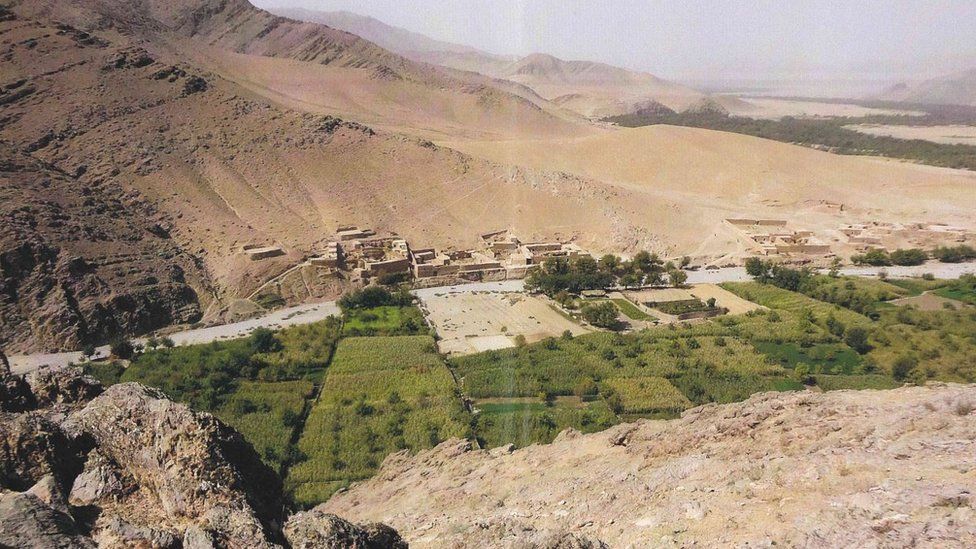
Mr Roberts-Smith’s actions “certainly fall within the scope” of the OSI’s work, says international law Prof Donald Campbell from the Australian National University.
But none of the evidence presented in the defamation case can be used in any criminal trial, and investigations would have to start afresh, he says.
“The government has supported the special investigator because they know that if they are going to bring any successful criminal prosecutions, they need to go out and collect evidence in Afghanistan,” he tells the BBC.
Regardless of whatever further evidence is gathered, many experts say the Brereton Report and testimonies from Mr Roberts-Smith’s case warrant a deeper reckoning.
“We have to not forget that Ben Roberts-Smith and others accused of war crimes were not operating alone,” says James Connor, a military sociologist at the University of New South Wales.
“They were always under the command of others. They were always part of a group, and responsibility for what went wrong has to be shared widely.”
“That’s not to diminish their actions… but the culture is rotten and the cover-up which has flowed from that is also rotten.”
Australia’s reliance on “tiny” numbers of professional soldiers carrying out multiple tours of duty in conflict zones is another thing “that we ought to reflect on”, Prof Stanley says.
Last year, a secret report obtained by the Guardian Australia under freedom of information laws warned of morale issues and a “high demand” for mental health services among Australia’s elite forces.
“We cannot put people into harm’s way repeatedly without appropriate support and oversight of what they’re doing and how,” says Mr Connor.
He argues the Australian Defence Force has had a “cultural problem” for “decades”, and that secrecy, tribalism and “misguided loyalty” have been allowed to flourish.
“Defence has tried to argue that it’s a few bad apples, or perhaps even a bad barrel here and there… but overall, the culture needs to change and change rapidly,” he adds.
But Prof Stanley believes the painful examination of the darker chapters of Australia’s war record could eventually provide a redemptive moment.
“Characteristically Australians believe in a fair go, [which] involves things like admitting that things go wrong, and investigating them if need be,” he says.
“Australians might be embarrassed or even ashamed that these allegations have been made, but the fact that Australia is openly and properly investigating them is, I think, a source of pride.”
Related Topics
Cambodia navigates nexus of crises
Climate change, the Covid-19 pandemic, and geopolitical conflicts have caused enormous disruptions to energy and food markets, driving prices to record highs, impacting the poor most severely. In Cambodia, hard-earned development gains were lost, and the country’s Human Development Index regressed to its 2018 level.
The cascading energy, food and financial crises impacted economic, education, employment and health outcomes, particularly for the most vulnerable.
At the onset of the pandemic in 2020, the Cambodian government upscaled its social assistance. More than 700,000 poor and vulnerable households received cash assistance to offset the socioeconomic impacts of the pandemic.
In 2022, about 500,000 additional near-poor households were included to minimize their vulnerability to the impacts of floods and inflation.
Undoubtedly, these measures slowed the loss of development and the slide of vulnerable households into poverty. But immense pressure was exerted on public finances and the financial resources available for achieving the Sustainable Development Goals (SDGs) had to be repurposed.
Even before the pandemic, achieving the SDGs was highly dependent on sustained investment, the adoption of effective policies, and the ability to implement them on time. Although rapid economic recovery in Cambodia is attracting foreign direct investment, refueling the economic engines and creating jobs is still vulnerable to external shocks and uncertainties.
Interconnectedness
Although fuel and commodity prices have eased globally to varying degrees, concerns remain, as they are still above historical averages. Dependence on fossil fuels is causing a current-account deficit in the country.
In 2021, about US$57 million were spent on fuel subsidies in Cambodia. In January and February 2022 alone, the subsidy accounted for $31 million – resources that could have been invested in development.

A 2020 study indicated that Cambodia could save $250 million by 2040 in direct power-system costs if the national energy grid mix was 14% solar photovoltaic, notwithstanding other indirect environmental and socio-economic impacts (such as a 38% increase in job creation).
Such socio-economic gains cannot be underestimated. Also, the performance of the energy sector directly affects the country’s climate agenda. Cambodia increased its mitigation ambition with an emissions-reduction target of 41.7% by 2030. This included specific targets in areas such as energy efficiency.
Cambodia remains highly vulnerable to climate-change impacts. The increased frequency of extreme weather events is making harvests more unpredictable and reducing crop productivity, threatening food security and farmers’ livelihoods, notwithstanding other types of loss and damage.
In 2020, a 50% prevalence of food insecurity was reported in Cambodia. A study by the Ministry of Economy and Finance assessed that Cambodia’s expected GDP could decline by almost 10% by 2050 because of loss and damage due to climate change. Recovery requires public investments that will further reduce fiscal space.
The country is at a crossroads
New opportunities can emerge from the crisis. Innovation is vital to renew development momentum and improve resilience. This would require new technologies, business models, policy frameworks, and social advances that prioritize synergies across energy, food, and finance.
For instance, low-carbon farming offers the opportunity to optimize the use of fertilizers, raise agricultural yields, and reduce environmental impact. Clean energy improves the resilience of the agriculture sector and accelerates agri-food value chain improvement through secure irrigation, cold storage, and the use of agricultural residues for clean cooking – a health concern for rural women and girls.
Energy efficiency plays a key role by bringing gains in different sectors of the economy and reducing energy sector vulnerability and energy uncertainty. The National Energy Efficiency Policy identified that Cambodia has the potential to save 12.5 terawatt-hours of energy (1.07 million metric tons of oil equivalent) by 2030 through energy efficiency measures. The financial savings could be reallocated to support development priorities and the SDGs.
Recalibrating public financial management is vital through the integration of the SDGs in the budgeting process, exploring new approaches to revenue mobilization and reforming wasteful agricultural, food, and fossil-fuel subsidies. Cambodia has developed a methodology for monitoring and tracking SDGs-related expenditures in the national budget system, which is expected to be institutionalized soon.
Finally, as a Least Developed Country, Cambodia has been benefiting from concessional financing, but once it graduates from LDC status, its financial architecture will progressively evolve.
Unlocking private capital and scaling up private-sector investment is key to expanding SDG-related investments. It will require removing barriers to direct financing from private institutions such as high interest rates, short repayment periods, and stringent collateral requirements, as well as prioritizing SDGs’ impact investments.
This is where blended finance can also de-risk investments in the agri-food sector and clean energy, to boost business but also food and human security.
The road to resilience passes by the energy, food, and finance nexus. The risks posed by this nexus will become more significant because of growing demand for energy and food in a context of uncertainty and decreasing domestic and international financial resources for development.
A systemic approach to policymaking and investment that considers their interconnectedness, multi-sectoral nature and the need for multi-actor partnerships prioritizing synergies across energy, food, and finance is needed to break the vicious cycle of vulnerability.
National park employee charged for alleged assault, attempted rape

KANCHANABURI: A national park employee has been detained and charged after he allegedly assaulted a Lithuanian woman and attempted to rape her near a garbage dump in Si Sawat district.
Pramote Khongkham, 24, an employee hired on a temporary contract by the Erawan National Park in tambon Kradan, reported to police at Si Sawat station on Thursday to acknowledge the indecent assault charge, said Pol Maj Pakornkiart Shinathet, the station’s investigation chief.
On Friday, the national park on Friday terminated Mr Pramote from employment and urged the police pursue severe measures against him.
On Thursday afternoon, Evilija Grabauskaitem 27, accompanied by tourist police and an interpreter, filed a complaint with police. The tourist, who had bruises on her body, accused the man of assaulting her. She provided video footage and photos of the incident to the officers and guided hem to the location where the assault occurred, said Pol Maj Pakornkiart.
Police coordinated with Erawan National Park chief Prawat Phuangthong to gather details about Mr Pramote. The suspect later turned himself in to police on Thursday evening.

Pramote Khongkham, 24, an employee hired on a temporary contract by the Erawan Nationa Park in Kanchanaburi’s Si Sawat district reports to police to face charges. (Photo: Piyarat Chongcharoen)
During questioning, he told police that he had noticed the woman near the national park’s signpost as he was riding a motorcycle to buy candles from a nearby shop. Upon his return, he encountered her in the same area and honked his bike’s horn as a friendly gesture. The woman subsequently followed him on her motorcycle.
According to the suspect’s statement, he advised the woman not to follow him when he entered a forested area, but she seemed to misunderstand him.
During their walk together, he admitted to the police that he had initially felt an urge to rape her. However, he changed his mind after she fell down.
Mr Pramote said he then escorted her out of the forest and apologised for his actions. While admitting his fault, he claimed that he did not assault her but only pulled her hands.
According to the investigation, the suspect had parked his bike near a garbage dump before proceeding to the nearby forested area with the woman. He allegedly used force in an attempt to rape her, but she resisted and managed to escape.
The suspect is in police custody awaiting further legal action.

